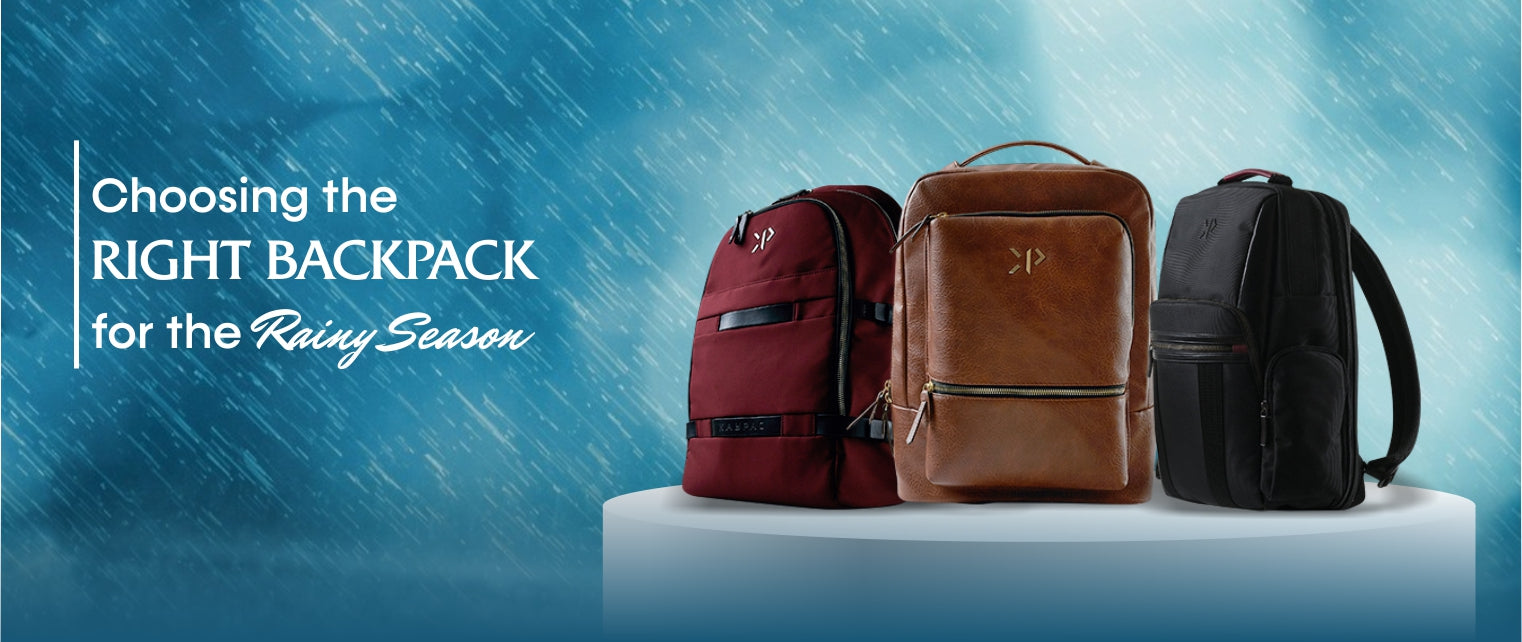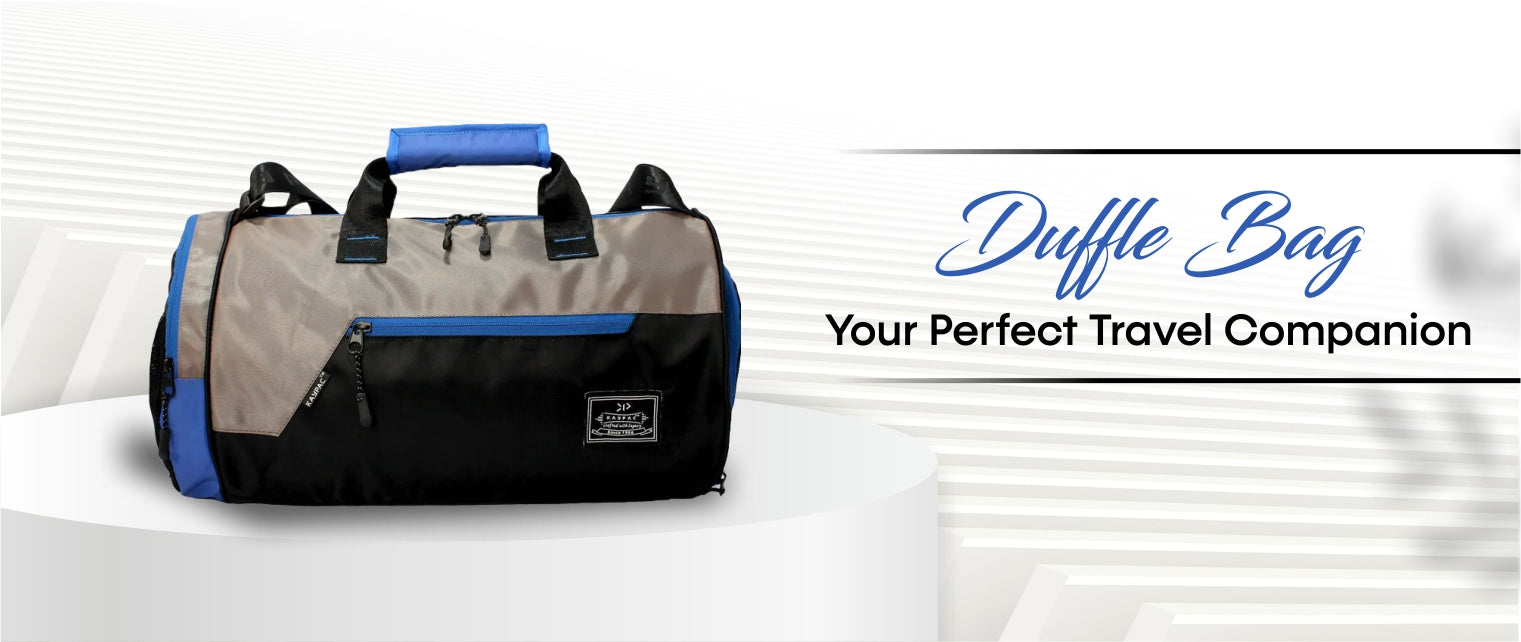
Choosing the Right Backpack for the Rainy Season: A Comprehensive Guide
Introduction:
The rainy season brings with it a unique set of challenges, especially for those who regularly carry backpacks. Whether you're commuting, traveling, or simply going about your day-to-day activities, choosing the right backpack can make a significant difference in keeping your belongings safe and dry. In this blog, we will explore the essential factors to consider when selecting a backpack for the rainy season, ensuring you stay prepared and protected even in the harshest weather conditions.
Considerations for a Rain-Ready Backpack:
1. Waterproof materials:
When it comes to rainy weather, a waterproof backpack is your best companion. The primary purpose of a waterproof backpack is to keep your belongings dry, protecting them from rainwater seepage. Look for backpacks constructed from materials such as waterproof nylon or polyester. These materials are specially designed to repel water and prevent it from penetrating through the fabric. Additionally, pay attention to seam-sealed construction, as it helps ensure water doesn't seep in through the stitched areas.
2. Water-resistant zippers and closures:
While the overall backpack material should be waterproof, the zippers and closures also play a crucial role in keeping rainwater out. Opt for backpacks equipped with water-resistant zippers and closures, as they provide an additional layer of protection against water infiltration. These zippers are designed to have a tighter seal, minimizing the chances of water seeping through the zipper teeth.
3. Proper compartmentalization:
During the rainy season, it's important to keep your belongings organized and separate from each other to prevent damage from potential water leaks. Look for backpacks with dedicated compartments, including a padded laptop compartment with waterproof padding. This will ensure that even if water enters the backpack, your electronic devices will remain protected. Additionally, having waterproof pockets and compartments for essential items such as phones, wallets, and documents will give you peace of mind during rainy commutes or outdoor activities.
Ergonomics and Comfort:
1. Adjustable straps and back panel:
Comfort is paramount when choosing a backpack for any season, and the rainy season is no exception. Ensure the backpack has adjustable shoulder straps to achieve a proper fit and distribute the weight evenly on your shoulders. Additionally, look for a padded back panel that provides cushioning and support, making the backpack more comfortable to carry for extended periods.
2. Ventilation system:
One common issue with backpacks during rainy seasons is the build-up of moisture on your back due to lack of ventilation. To counter this, opt for backpacks with a built-in ventilation system. This typically involves a mesh or perforated back panel that allows air to circulate, reducing sweat accumulation and increasing overall comfort. Similarly, selecting backpacks with ventilated shoulder straps can further enhance breathability.
3. Chest and hip straps:
For added stability and balance, consider backpacks with chest and hip straps. These straps distribute the weight more evenly, reducing strain on your shoulders and improving overall comfort. In heavy rain, these straps help secure the backpack tightly against your body, preventing it from swaying or shifting, and ensuring it remains in place during your activities.
Durability and Sturdiness:
1. Reinforced stitching and construction:
To ensure your backpack withstands the challenges of the rainy season, pay attention to its stitching and construction. Look for backpacks with reinforced stitching, preferably double or triple stitching, as this enhances durability and prevents seams from tearing or unraveling. Additionally, backpacks with reinforced stress points, such as handles and attachment points, provide extra strength where it's needed most.
2. High-quality materials:
In addition to being waterproof, it's crucial for your backpack to be made from high-quality materials that can withstand the rigors of the rainy season. Nylon, polyester, and ripstop fabrics are known for their durability and resistance to tearing. Consider backpacks with an abrasion-resistant bottom panel, as this area tends to experience the most wear and tear. A sturdy bottom panel will protect your backpack from sharp surfaces and potential water puddles.
3. Rain covers:
Some backpacks come with built-in rain covers or offer them as separate accessories. Rain covers provide an additional layer of protection against heavy rain. They are typically made from waterproof materials and can be easily deployed to cover the entire backpack when needed. When not in use, they can be conveniently stored in a dedicated compartment or pocket.
Additional Features and Considerations:
1. Reflective elements:
During the rainy season, visibility can be significantly reduced, especially in low-light conditions. To enhance your safety, choose backpacks with reflective strips or patches. These reflective elements will make you more visible to motorists and pedestrians, reducing the risk of accidents, particularly if you're commuting or walking along roads during rainy evenings or early mornings.
2. Size and capacity:
When selecting a backpack for the rainy season, consider your personal needs and usage. Assess the volume of items you typically carry and choose a backpack with an appropriate capacity. Backpack capacity is measured in liters, ranging from compact daypacks (around 20-30 liters) to larger backpacks suitable for longer trips (50+ liters). Strike a balance between size and practicality, ensuring the backpack can accommodate your belongings without being overly bulky or cumbersome.
3. Warranty and customer support:
Investing in a high-quality backpack for the rainy season is a long-term decision. Therefore, it's important to consider the warranty and customer support offered by the backpack manufacturer. Check the warranty coverage to ensure it includes protection against manufacturing defects and potential water damage. Additionally, research the brand's reputation for customer support, as prompt and reliable assistance can be crucial in case of any issues or concerns.
Conclusion:
Choosing the right backpack for the rainy season is crucial to protect your belongings and ensure a comfortable experience. Considerations such as waterproof materials, water-resistant zippers, proper compartmentalization, ergonomics, durability, and additional features like reflective elements are key factors to evaluate when making your selection. By making an informed choice and investing in a backpack that meets your needs, you can navigate the rainy season with confidence and convenience, regardless of your activities or daily routines.



